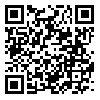Volume 13, Issue 3 (12-2018)
MGj 2018, 13(3): 419-422 |
Back to browse issues page
Download citation:
BibTeX | RIS | EndNote | Medlars | ProCite | Reference Manager | RefWorks
Send citation to:



BibTeX | RIS | EndNote | Medlars | ProCite | Reference Manager | RefWorks
Send citation to:
Sattaei Mokhtari M, Mohammadi Y, Razmkabir M. Improving genetic evaluation of calving difficulty applying correlated traits in Iranian Holsteins. MGj 2018; 13 (3) :419-422
URL: http://mg.genetics.ir/article-1-77-en.html
URL: http://mg.genetics.ir/article-1-77-en.html
Abstract: (2216 Views)
In the present study the potential consideration of calf birth weight (BW) and gestation length (GL) as correlated traits for improving genetic evaluation of calving difficulty (CD) in Iranian Holsteins at first calving was studied applying data collected from 2002 to 2013 in 131 herds by Animal Breeding and Production Improvement center of Iran. The influences of direct and maternal additive genetic effects on each trait were tested and the most appropriate model for each trait determined. Considering the most appropriate model for each trait, predictive abilities of four genetic evaluation models of CD including univariate model of CD, bivariate model of CD and BW, bivariate model of CD and GL and trivariate model of CD, BW and GL were compared applying mean of squares and correlation between observed and predicted values. The obtained results revealed that the model included direct additive genetic and maternal additive genetic effects as random effects, without considering covariance between them, was the most appropriate model for estimating variance components of the considered calving traits. Comparisons of the models revealed that model included CD and BW had better predictive ability than univariate model included CD and the bivariate included CD and GL in terms of lower mean square of error and higher Pearson correlation between observed and predicted values of CD. There was no difference between bivariate model (CD- BW) and multivariate model (CD-BW-GL) in terms of predictive ability. Therefore, BW can be considered as a suitable correlated trait for genetic evaluation of CD at first calving in Iranian Holsteins.
Keywords: Calving difficulty, Correlated traits, Holstein cows, Maternal effects, Predictive ability
Type of Study: Research |
Subject:
Subject 02
Received: 2017/04/3 | Accepted: 2018/03/4 | Published: 2019/10/2
Received: 2017/04/3 | Accepted: 2018/03/4 | Published: 2019/10/2
Send email to the article author
| Rights and permissions | |
 |
This work is licensed under a Creative Commons Attribution-NonCommercial 4.0 International License. |






